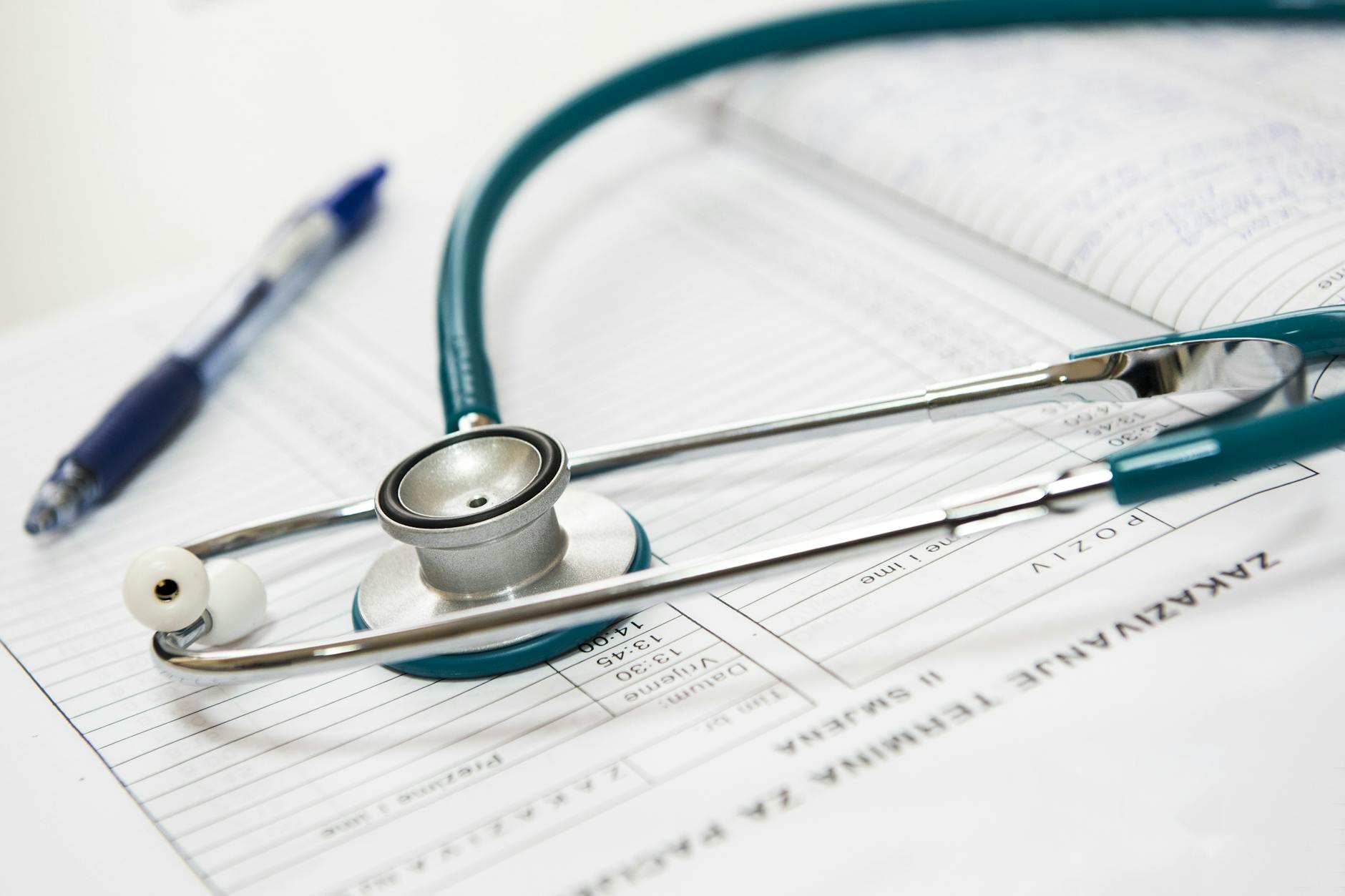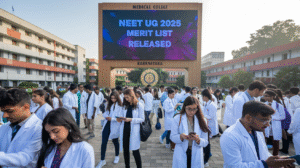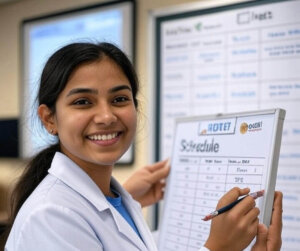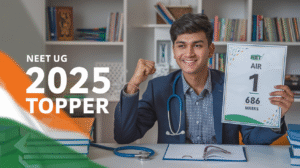Have you ever dreamed of becoming a doctor but felt overwhelmed by the complex admission process? 🩺 We understand that navigating the path to medical school can be daunting, especially when you’re unsure where to begin. The journey to an MBBS degree is filled with challenges, from maintaining a stellar GPA to acing the MCAT and crafting the perfect application. But don’t worry – we’re here to guide you through every step of the way!
In this comprehensive guide, we’ll unlock the secrets to direct MBBS admission and provide you with a clear roadmap to success. Whether you’re a high school student planning ahead, a college undergraduate preparing to apply, or even considering a career change, our step-by-step approach will demystify the entire process. We’ll cover everything from understanding academic requirements and essential application components to securing strong letters of recommendation and acing your interviews. 💪
Are you ready to turn your dream of becoming a doctor into reality? Join us as we dive deep into the world of medical school admissions, sharing insider tips and strategies that will give you the edge you need. From crafting a compelling personal statement to navigating the application year, we’ll equip you with the knowledge and confidence to tackle each phase of this challenging journey. Let’s embark on this exciting path together and pave your way to a successful career in medicine! 🌟
Understanding the Medical School Admission Process

A. Types of medical schools: Allopathic (MD) vs Osteopathic (DO)
When embarking on the journey to become a medical doctor, we must first understand the two main types of medical schools in the United States: Allopathic (MD) and Osteopathic (DO) programs. Both pathways lead to becoming licensed physicians, but there are some key differences:
| Aspect | Allopathic (MD) | Osteopathic (DO) |
|---|---|---|
| Focus | Traditional medicine | Holistic approach |
| Curriculum | Emphasis on disease treatment | Additional training in Osteopathic Manipulative Treatment (OMT) |
| Degree | Doctor of Medicine (MD) | Doctor of Osteopathic Medicine (DO) |
| Licensing Exam | USMLE | COMLEX-USA (can also take USMLE) |
In our experience, the MD program is equivalent to the MBBS degree in many countries. It typically begins after completing a bachelor’s degree, usually with a focus on pre-medical studies in fields such as biology or chemistry.
B. Timeline for application and admission
We’ve found that the application timeline for medical school is quite structured and requires careful planning. Here’s a general overview of the process:
- Undergraduate studies: 4 years
- MCAT preparation and exam: Usually taken during the third year or after graduation
- Application submission: May or June of the year prior to desired enrollment
- Interviews: Scheduled between August and March
- Admission decisions: Communicated from January to May
It’s important to note that this timeline can vary slightly depending on the specific medical school and program.
C. Rolling admissions and importance of early application
We cannot stress enough the significance of early application in the medical school admission process. Many medical schools in the USA use a rolling admissions system, which means they review and make decisions on applications as they are received, rather than waiting until after the deadline.
Here’s why applying early is crucial:
- More available seats: Early applicants have a better chance of securing a spot as the class size fills up.
- Increased interview opportunities: Schools tend to schedule interviews earlier in the cycle for early applicants.
- Reduced competition: As the cycle progresses, the applicant pool grows, making it more competitive.
- Demonstrates commitment: Early application shows strong interest and preparedness to the admissions committee.
To make the most of the rolling admissions process, we recommend:
- Preparing application materials well in advance
- Taking the MCAT early enough to have scores available when applications open
- Submitting a well-crafted application as soon as the submission period begins
- Following up promptly with any additional required materials
Now that we have covered the fundamental aspects of understanding the medical school admission process, including the types of medical schools, application timeline, and the importance of early application, we’ll move on to discuss the academic requirements for medical school. This next section will delve into the specific qualifications and prerequisites needed to be a competitive applicant in the challenging field of medicine.
Academic Requirements for Medical School

Now that we’ve covered the basics of understanding the medical school admission process, let’s delve into the specific academic requirements you’ll need to meet for your MBBS direct admission.
A. Undergraduate degree in pre-medical studies
We recommend pursuing a strong background in life and social sciences as part of your undergraduate studies. While some medical schools, like the Mayo Clinic Alix School of Medicine, don’t mandate specific prerequisite courses, others, such as Johns Hopkins University School of Medicine, have more structured requirements. Here’s a general overview of the courses you should consider:
| Subject Area | Typical Requirements |
|---|---|
| Biology | Multiple courses with labs |
| Chemistry | General and organic chemistry with labs |
| Physics | At least one course with lab |
| Mathematics | Calculus or statistics |
| Humanities/Social Sciences | Several courses |
We emphasize that these requirements can vary between institutions, so it’s crucial to check the specific prerequisites for the medical schools you’re interested in.
B. Maintaining a competitive GPA
Your Grade Point Average (GPA) is a critical factor in the admissions process. While medical schools don’t typically publish minimum GPA requirements, we stress the importance of maintaining a high GPA throughout your undergraduate studies. A competitive GPA demonstrates your academic prowess and ability to handle the rigorous curriculum of medical school.
To help you maintain a strong GPA, we suggest:
- Developing effective study habits early in your academic career
- Seeking help from professors or tutors when needed
- Balancing your course load to avoid overwhelming yourself
- Prioritizing your pre-medical courses without neglecting other subjects
C. Preparing for and taking the MCAT
The Medical College Admission Test (MCAT) is a standardized exam that plays a crucial role in the medical school admission process. We cannot overstate its importance, as your MCAT score is often used as a key metric in evaluating your application.
Some key points to remember about the MCAT:
- Scores are typically valid for three years prior to matriculation
- A competitive score is essential (for example, Mayo Clinic Alix School of Medicine requires a minimum score of 508)
- The test covers a wide range of subjects, including biology, chemistry, physics, and critical analysis
We recommend starting your MCAT preparation well in advance, ideally at least six months before your planned test date. Consider using a combination of study methods, including:
- Review books and online resources
- Practice tests to familiarize yourself with the format and timing
- Study groups to collaborate and share knowledge
- Professional prep courses if you need additional structure and guidance
Remember, your MCAT score, along with your GPA and undergraduate coursework, forms the academic foundation of your application. These elements work together to demonstrate your readiness for the challenges of medical school.
With these academic requirements in mind, we’ll next explore the essential application components you’ll need to prepare for your MBBS direct admission process. This includes crafting a compelling personal statement, securing strong letters of recommendation, and showcasing your extracurricular activities and experiences.
Essential Application Components

Now that we’ve covered the academic requirements for medical school, let’s delve into the essential components of your application. These elements are crucial in presenting a comprehensive picture of your qualifications and potential as a future medical professional.
A. Primary application through AMCAS
The primary application is typically submitted through the American Medical College Application Service (AMCAS). While our reference content doesn’t specifically mention AMCAS, we can infer that a primary application is a standard requirement. This application forms the foundation of your candidacy and is often the first point of contact with medical schools.
B. Secondary applications
After submitting your primary application, you may be required to complete secondary applications for individual schools. These are more specific to each institution and allow you to showcase your fit for their particular program.
C. Letters of recommendation
Letters of recommendation play a crucial role in your application. As mentioned in the Harvard Medical School (HMS) guidelines, these letters help demonstrate your intellectual and personal credentials. We recommend securing strong letters that highlight your potential for success in medicine.
D. Personal statement
Your personal statement is a vital component of your application. The University of the West Indies (UWI) St. Augustine Faculty of Medical Sciences requires an autobiographical sketch, which is similar to a personal statement. This document allows you to:
- Showcase your motivation for pursuing medicine
- Highlight relevant experiences
- Demonstrate your understanding of the medical profession
E. Official transcripts and MCAT scores
Official transcripts and standardized test scores are essential components of your application. While the MCAT isn’t explicitly mentioned in our reference content, it’s a standard requirement for most medical schools in North America. The UWI and HMS both emphasize the importance of academic qualifications:
| Component | UWI Requirements | HMS Requirements |
|---|---|---|
| Transcripts | CSEC subjects including English, Chemistry, Physics, Biology, and Mathematics | Proficiency in biological and physical sciences |
| Additional Qualifications | CAPE or A-level subjects | Minimum of three years of college work and a baccalaureate degree |
| GPA | Varies based on academic background | Not specified, but strong academic performance is emphasized |
It’s important to note that specific requirements may vary between institutions. For instance, HMS requires completion of all prerequisite coursework before enrollment and emphasizes the need for a well-rounded education including humanities and social sciences.
We also want to highlight that both institutions have specific eligibility criteria:
- UWI requires applicants to be at least 18 years old by the admission date for the MBBS program.
- HMS rarely accepts foreign students without a degree from a U.S. or Canadian institution and requires at least one year of college or university training in the U.S. or Canada for those with previous academic work elsewhere.
As we prepare to explore extracurricular activities and experiences in the next section, it’s crucial to remember that these application components work together to create a comprehensive picture of your qualifications. While academic achievements are important, medical schools also value well-rounded individuals who can demonstrate their commitment to the field of medicine through various experiences and accomplishments.
Extracurricular Activities and Experiences
Now that we’ve covered the essential application components, let’s dive into the crucial role of extracurricular activities and experiences in the MBBS direct admission process. These activities not only enhance your application but also demonstrate your commitment to medicine and your ability to manage challenging situations.
A. Clinical experience through shadowing and volunteering
Clinical experience is a vital aspect of your application, providing hands-on exposure to patient care. We recommend aiming for at least 300 hours of clinical experience, which can be achieved through various means:
- Shadowing: Aim for 50-100 hours of shadowing with at least three physicians. This experience offers invaluable insights into the medical profession.
- Volunteering: Strive for 300+ hours of volunteering, particularly in underserved communities. This showcases your commitment to service and cultural competence.
| Activity | Recommended Hours |
|---|---|
| Shadowing | 50-100 hours |
| Volunteering | 300+ hours |
| Total Clinical Experience | 300+ hours |
Remember, quality often outweighs quantity. Focus on meaningful experiences that demonstrate your genuine passion for medicine.
B. Research involvement
While not mandatory for all schools, research experience can significantly enhance your application, especially for prestigious institutions:
- Aim for 400+ hours of research experience
- Engage in independent projects that may lead to publication
- For MD-PhD programs, even more extensive research hours are recommended
We emphasize that the depth of your research experience is often valued more than the outcome. Showcase your ability to contribute to scientific inquiry and your commitment to advancing medical knowledge.
C. Leadership roles and community service
Leadership experience is essential, as future doctors must be adept at guiding others. We recommend:
- Accumulating 100+ hours of leadership experience
- Engaging in community service activities
- Participating in multi-purpose activities that demonstrate multiple skills simultaneously
These experiences help develop crucial skills such as teamwork and communication, which are vital in a medical career.
D. Balancing depth vs. breadth in activities
When selecting extracurricular activities, we advise prioritizing quality over quantity:
- Focus on a few meaningful experiences rather than a long list of superficial involvements
- Choose activities that align with your interests and values
- Seek opportunities that have had a significant personal impact
- Identify a niche or personal “slogan” that reflects your unique combination of experiences and aspirations
By strategically balancing your extracurricular activities, you can create a well-rounded profile that showcases your readiness for the demands of medical school and a career in medicine.
As we move forward, we’ll explore how to craft a compelling personal statement that effectively highlights these extracurricular experiences and demonstrates your unique qualifications for MBBS admission.
Crafting a Compelling Personal Statement

Now that we’ve explored the importance of extracurricular activities and experiences in your MBBS direct admission process, let’s focus on another crucial aspect of your application: crafting a compelling personal statement. This essential component of your application allows you to showcase your unique journey and motivations for pursuing a career in medicine.
A. Starting early and brainstorming ideas
We recommend beginning the process of writing your personal statement well in advance. This gives us ample time to reflect on our experiences and motivations. To kickstart our brainstorming session, let’s consider the following questions:
- What pivotal moments led us to choose medicine as a career?
- Which experiences have shaped our understanding of healthcare?
- What unique qualities do we possess that make us suitable for the medical profession?
By answering these questions, we can identify key themes and experiences to include in our personal statement.
B. Sharing personal experiences and motivations
When writing our personal statement, we should focus on narrating our journey rather than simply listing accomplishments. Let’s aim to showcase 2-3 core qualities through our experiences. Here’s a structure we can follow:
- Engaging introduction
- Body paragraphs highlighting significant experiences
- Conclusion reiterating our motivations and future aspirations
| Do’s | Don’ts |
|---|---|
| Use storytelling to illustrate qualities | Rely on clichés or generic statements |
| Focus on personal growth and insights | Over-emphasize prestigious experiences without personal reflection |
| Demonstrate qualities through narrative | Simply state qualities without supporting evidence |
C. Being authentic and genuine
Authenticity is key in our personal statement. We should aim to:
- Reflect on our unique journey to medicine
- Showcase our personality and individuality
- Demonstrate our preparedness for the challenges of medical school
Remember, there’s no “perfect topic” for a personal statement. What matters most is how we execute our narrative and convey our genuine motivations.
D. Proofreading and seeking feedback
Once we’ve drafted our personal statement, it’s crucial to revise and refine it. Here’s a checklist we can follow:
- Ensure clarity and conciseness in our writing
- Check that our introduction is engaging and our conclusion ties back to central themes
- Verify that we’ve adhered to the 5,300 character limit (approximately 500 words)
- Proofread for grammar and spelling errors
We should also consider seeking feedback from trusted mentors, peers, or even professional editing services. This external perspective can help us identify areas for improvement and ensure our personal statement effectively communicates our passion for medicine.
As we move forward in our MBBS direct admission process, the next crucial step is securing strong letters of recommendation. These letters will complement our personal statement by providing external validation of the qualities and experiences we’ve highlighted. With a compelling personal statement and strong recommendations, we’ll be well-positioned to make a lasting impression on admissions committees.
Securing Strong Letters of Recommendation

Now that we’ve covered how to craft a compelling personal statement, let’s move on to another crucial aspect of your MBBS direct admission process: securing strong letters of recommendation. These letters play a vital role in your application, often carrying more weight than your personal statement due to their objective nature.
Choosing the right recommenders
We cannot stress enough the importance of selecting the right individuals to write your recommendation letters. Aim for a diverse set of four to five letters, including:
- Two from science professors
- One from a non-science professor
- Two from extracurricular engagements
It’s crucial to choose recommenders who know you well and can provide insightful, positive endorsements. We advise against asking family members or acquaintances who lack intimate knowledge of your professional attributes.
| Recommender Type | Number of Letters |
|---|---|
| Science Professors | 2 |
| Non-Science Professor | 1 |
| Extracurricular Engagements | 2 |
Providing context about your goals
To help your recommenders write strong letters, we recommend providing them with essential materials:
- Submission instructions
- Comprehensive CV
- Academic transcripts
- Draft of your personal statement
- MCAT scores
- Clear submission deadlines
This information gives your recommenders the context they need to write detailed, personalized letters that align with your goals and highlight your strengths.
Requesting letters well in advance
We strongly suggest initiating the letter request process two to three months before application deadlines. This timeline allows ample time for letter preparation and ensures your recommenders aren’t rushed. Here’s how we recommend approaching the request:
- Ask soon after completing coursework or projects
- Personalize your request, highlighting shared experiences
- Request in person when possible, or use a well-crafted email
- Provide all necessary materials promptly
Following up with gratitude
After your recommenders have submitted their letters, we believe it’s essential to express your gratitude. This not only shows your appreciation but also helps maintain positive relationships. Here’s what we suggest:
- Send a thank-you note or email
- Keep recommenders updated on your application progress
- Inform them of any acceptances or decisions
We also recommend staying proactive throughout the process. Follow up on any missing letters and ensure all submissions are made on time.
As we wrap up this section on securing strong letters of recommendation, we want to emphasize that thoughtful planning and relationship-building are key to obtaining effective endorsements for your MBBS application. With these letters in hand, you’ll be well-prepared for the next crucial step in your journey: preparing for medical school interviews. In the following section, we’ll guide you through strategies to excel in these important conversations with admissions committees.
Preparing for Medical School Interviews

Now that we’ve covered how to secure strong letters of recommendation, let’s focus on preparing for medical school interviews. This crucial step in the MBBS direct admission process requires careful planning and practice to showcase your best self to potential schools.
A. Researching the specific medical school
Before stepping into the interview room, we must conduct thorough research on the medical school we’re applying to. This preparation demonstrates our genuine interest and helps us align our responses with the school’s values and programs. We should:
- Study the school’s mission statement, curriculum, and unique offerings
- Familiarize ourselves with recent developments or research initiatives
- Prepare thoughtful questions about the school’s programs and opportunities
B. Practicing common interview questions
To build confidence and refine our responses, we need to practice answering frequently asked questions. Here’s a list of common topics we might encounter:
- Motivation for pursuing medicine
- Personal strengths and weaknesses
- Ethical considerations in healthcare
- Long-term career goals
- Experiences that have shaped our interest in medicine
We recommend practicing with friends, family, or advisors to receive feedback and improve our delivery. It’s crucial to provide nuanced answers rather than simple responses, especially for questions requiring justification or reasoning.
C. Highlighting relevant experiences
During the interview, we must be prepared to discuss our goals and achievements while addressing any academic flaws candidly. We should:
- Create a list of personal strengths and achievements
- Reflect on how our experiences relate to our medical aspirations
- Be ready to explain how we’ve grown from challenges or setbacks
Here’s a table summarizing how we can effectively highlight our experiences:
| Experience Type | How to Highlight | Example |
|---|---|---|
| Academic | Discuss coursework relevant to medicine | “My advanced biology class inspired my interest in cellular research.” |
| Extracurricular | Explain skills developed and their relevance | “Leading the pre-med club taught me valuable leadership skills.” |
| Volunteer Work | Emphasize impact and lessons learned | “Volunteering at the local hospital solidified my commitment to patient care.” |
| Research | Discuss methodology and findings | “Our research on antibiotic resistance gave me insight into the challenges of modern medicine.” |
D. Dressing professionally and maintaining composure
First impressions matter, and our appearance and demeanor play a significant role in the interview process. We should:
- Choose appropriate, professional attire
- Arrive at least 10 minutes early to absorb the environment and calm our nerves
- Turn off cell phones and minimize other potential distractions
- Maintain good body language and make eye contact
- Communicate clearly and enthusiastically
Remember, our behavior during the entire visit is under scrutiny, not just during the formal interview. We must engage positively with everyone we encounter, from administrative staff to current students.
As we prepare for these interviews, it’s important to maintain a positive outlook and use each experience as a learning opportunity. By following these steps and staying true to ourselves, we’ll be well-equipped to navigate the interview process successfully.
With this comprehensive preparation for medical school interviews in mind, we’ll next explore how to navigate the application year, which involves managing timelines, deadlines, and the overall admission process.
Navigating the Application Year

Now that we have covered preparing for medical school interviews, let’s dive into navigating the application year. This crucial phase requires careful planning and execution to maximize your chances of success.
A. Submitting applications early
We cannot stress enough the importance of submitting your applications as early as possible. The AMCAS application typically opens in May, and it’s crucial to be prepared well in advance. Here’s why early submission is critical:
- Increases your chances of admission
- Allows more time for secondary applications
- Demonstrates your commitment and organization skills
To ensure a timely submission, we recommend gathering all necessary information, including transcripts and details of your experiences, well before the application opens. Remember, your application won’t be verified until all transcripts are processed, so plan accordingly.
B. Managing secondary applications efficiently
Once your primary application is submitted, you’ll need to focus on secondary applications. These require tailored responses to prompts from individual schools. Here’s how we suggest managing them:
- Start preparing for secondaries as soon as you submit your primary application
- Aim to submit each secondary within two weeks of receiving it
- Customize your responses for each school, showcasing your fit and interest
| Secondary Application Tips |
|---|
| Research each school thoroughly |
| Create a template for common prompts |
| Proofread carefully before submitting |
| Keep track of deadlines and submission dates |
C. Preparing for and attending interviews
The interview season typically runs from September to December. This is your opportunity to demonstrate your personality and fit for each program. We recommend:
- Investing in appropriate interview attire well in advance
- Practicing with mock interviews to improve your confidence
- Researching each school thoroughly before your interview
- Sending update letters post-interview to express continued interest and share new accomplishments
D. Maintaining academic performance and extracurricular involvement
While navigating the application process, it’s crucial not to neglect your ongoing responsibilities. We advise:
- Continuing to excel in your academic studies
- Maintaining involvement in extracurricular activities
- Documenting any new experiences or achievements
- Keeping your resume or CV updated
Remember, some schools may request updates on your activities and academic performance during the application cycle.
As you progress through the application year, we recommend staying organized and proactive. Keep track of important dates, such as:
- Application submission deadlines
- Interview dates
- Decision release dates
- Deadline for choosing a school (typically April 30)
If you’re accepted to multiple schools, participate in second look days to gather more information before making your final decision. By May, you should be ready to submit final transcripts and consider housing options.
In the event that you need to reapply, don’t be discouraged. Take the opportunity to reflect on areas for improvement and reach out to schools for feedback. This experience can significantly strengthen your future application.
By following this comprehensive approach to navigating your application year, we believe you’ll be well-prepared to tackle the challenges of the MBBS direct admission process. Stay focused, organized, and committed to your goal of becoming a medical professional.

Embarking on the journey to medical school is a challenging yet rewarding endeavor. We’ve explored the essential steps in the MBBS direct admission process, from understanding academic requirements to crafting a compelling personal statement. By following this comprehensive guide, aspiring medical students can navigate the complex application process with confidence and clarity.
Remember, success in gaining admission to medical school requires more than just academic excellence. We encourage you to focus on developing a well-rounded profile that showcases your passion for medicine, commitment to community service, and leadership skills. Start early, plan meticulously, and stay dedicated to your goal. With careful preparation and genuine enthusiasm for the medical field, you can maximize your chances of securing a spot in the medical school of your dreams. We wish you the best of luck on your path to becoming a future healthcare professional!
💬 Instant WhatsApp Support
Get real-time assistance for urgent queries about applications & deadlines
Average response time: 15 minutes
📞 One-on-One Consultation
Speak directly with our senior admission counselors for comprehensive guidance
Available Mon-Sat: 9 AM - 7 PM IST
Sunday: 10 AM - 4 PM IST
📩 Detailed Inquiry Form
Share your details and our experts will craft a personalized admission strategy
💬 Instant WhatsApp Support
Get real-time assistance for urgent queries about applications & deadlines
Average response time: 15 minutes
📞 One-on-One Consultation
Speak directly with our senior admission counselors for comprehensive guidance
Available Mon-Sat: 9 AM - 7 PM IST
Sunday: 10 AM - 4 PM IST
📩 Detailed Inquiry Form
Share your details and our experts will craft a personalized admission strategy






